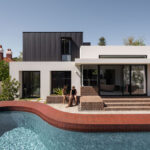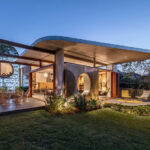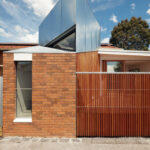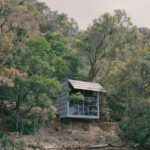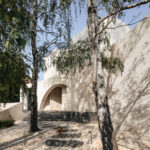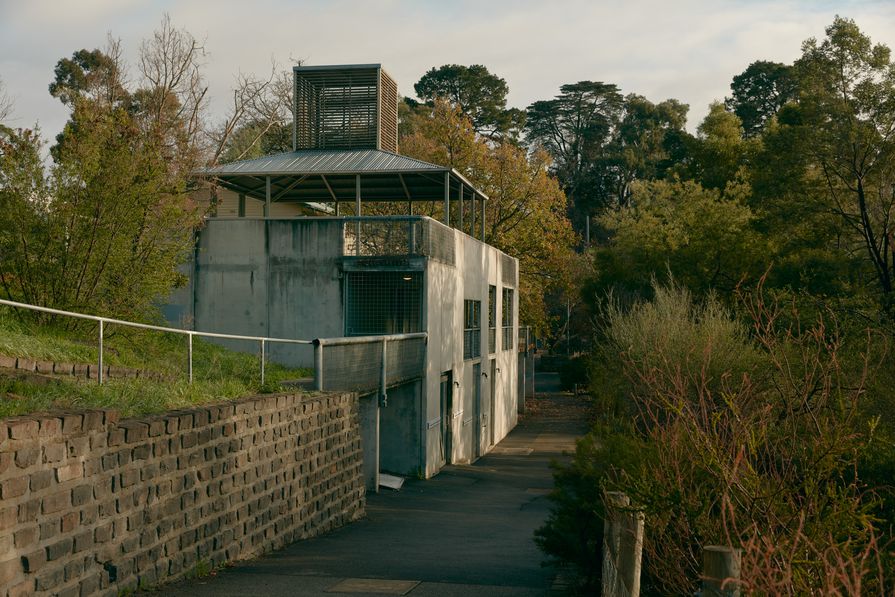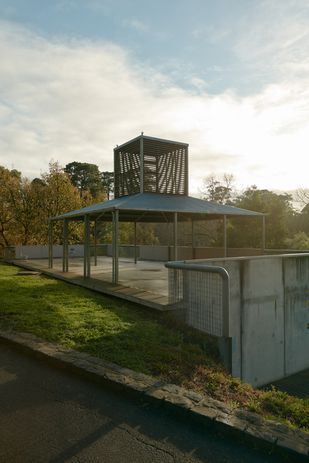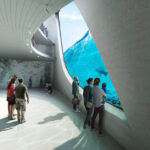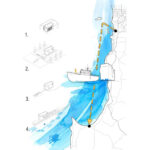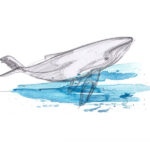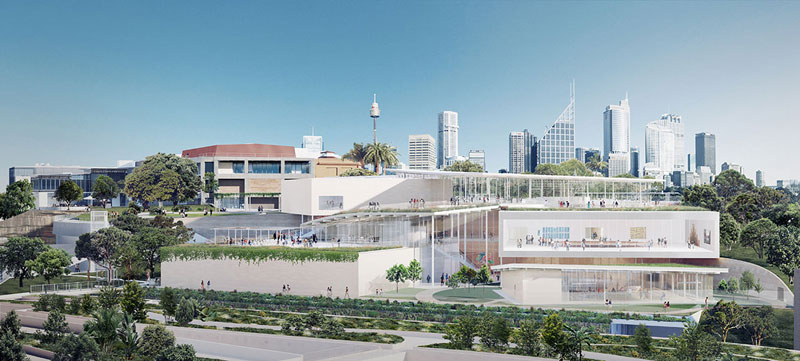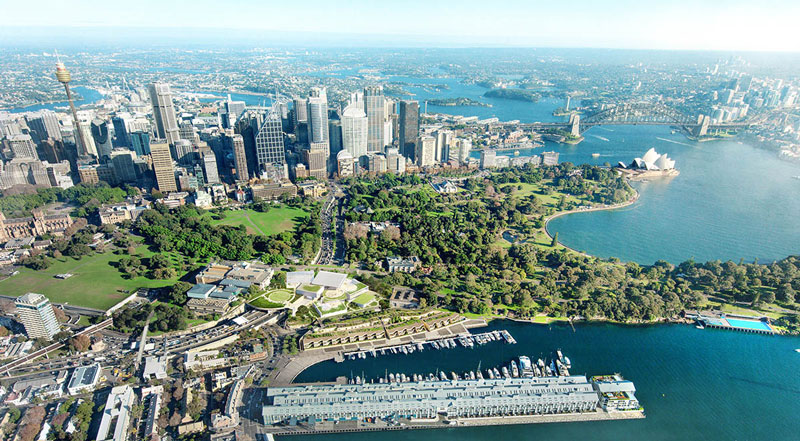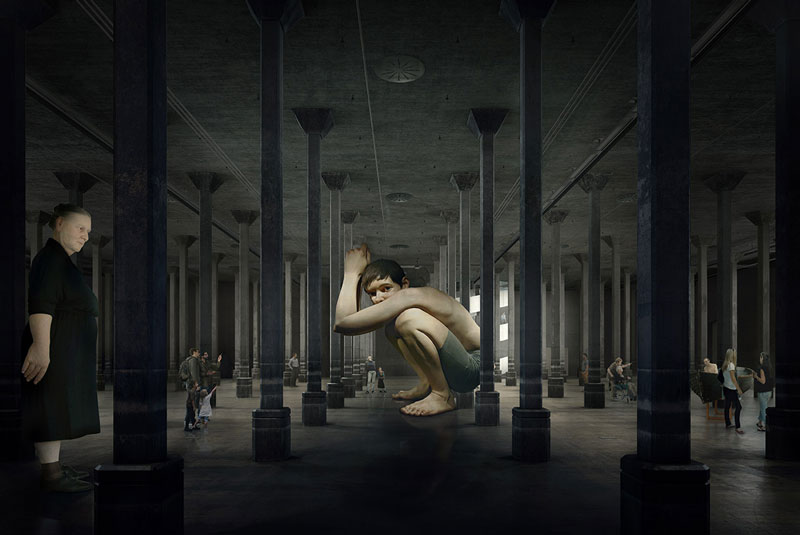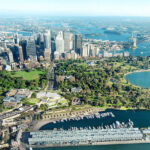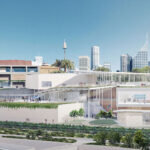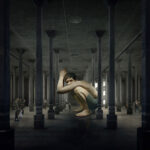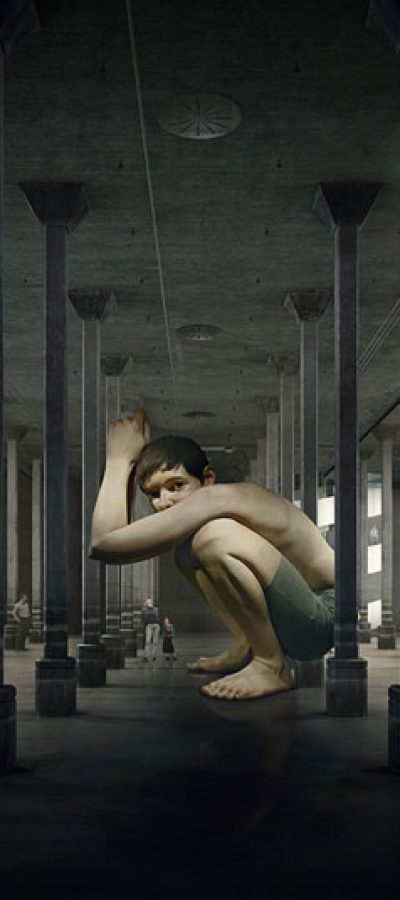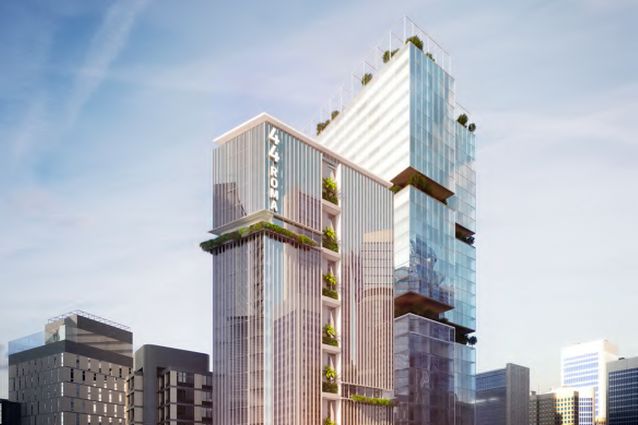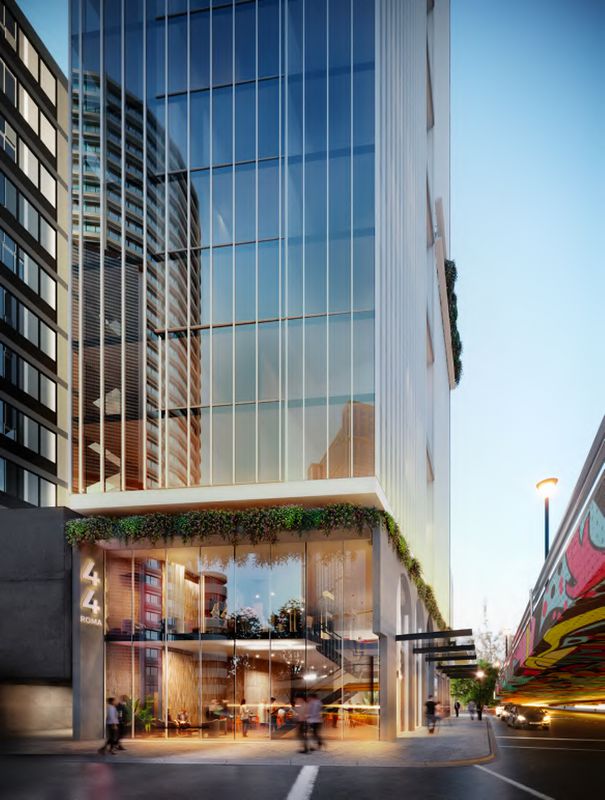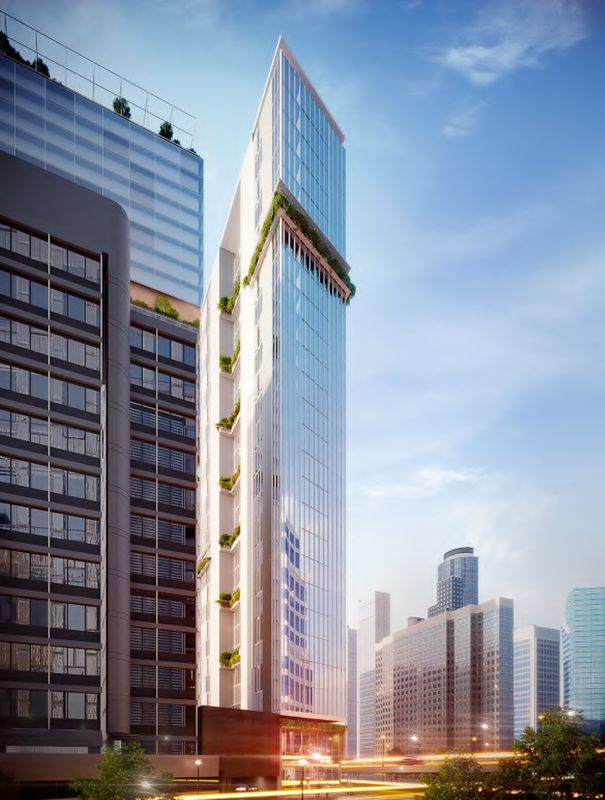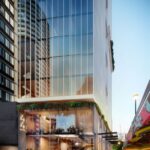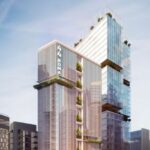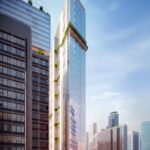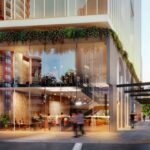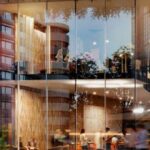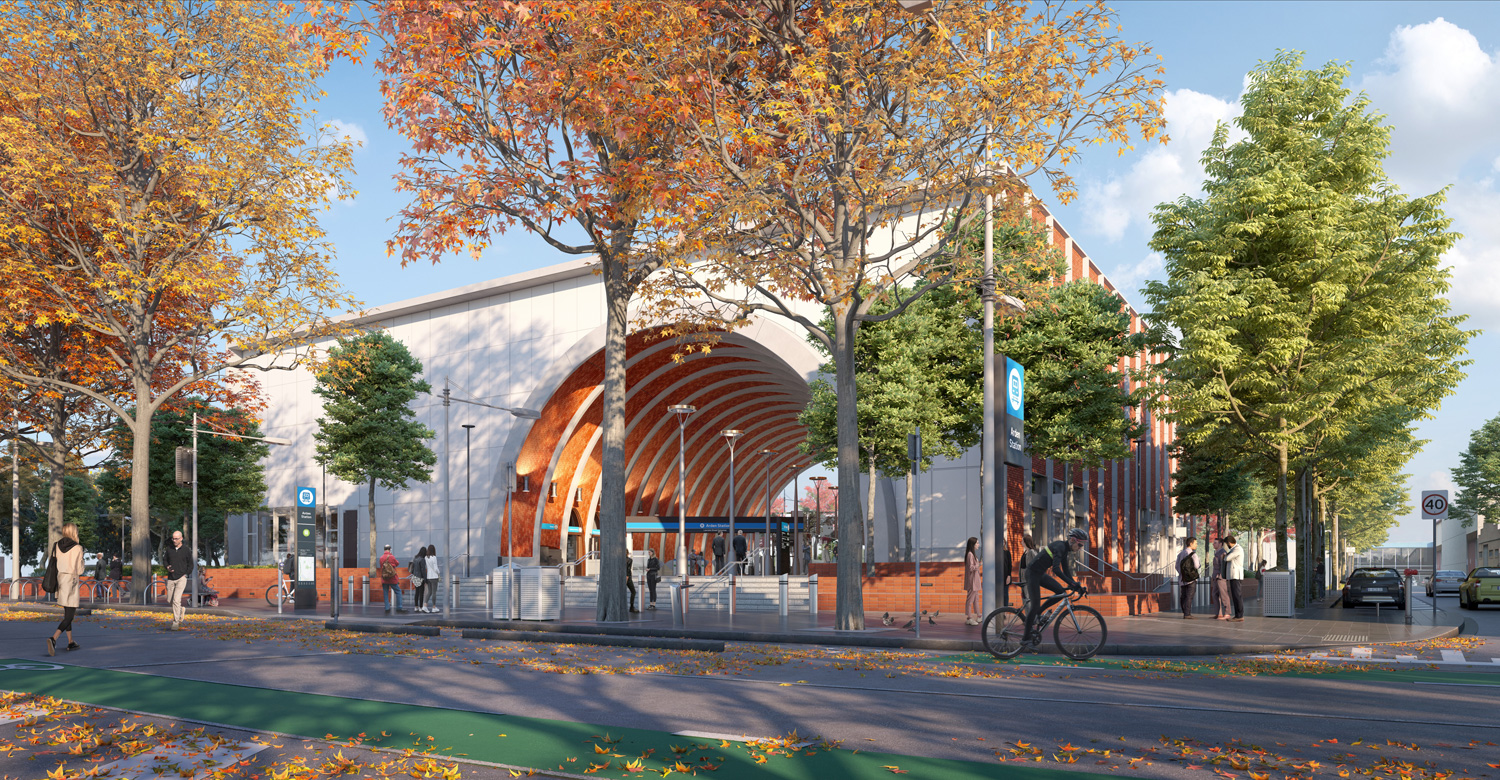
Updated Melbourne Metro Tunnel station design unveiled
The Victorian government has unveiled updated designs for Ardern Station in North Melbourne, part of the Metro Tunnel station project, collaboratively designed by Hassell, Weston Williamson and Rogers Stirk Harbour and Partners.
Updates to the design included in the new Development Plan contain the provision of a series of public grassed areas interspersed with tree planting, and improved station access with repositioned entry gates and the reorientation of entry ramps on Laurens Street.
The entrance will now feature 15 soaring brick arches, down from the planned 16. These are being built off-site and will be delivered to the station and installed over the coming months.
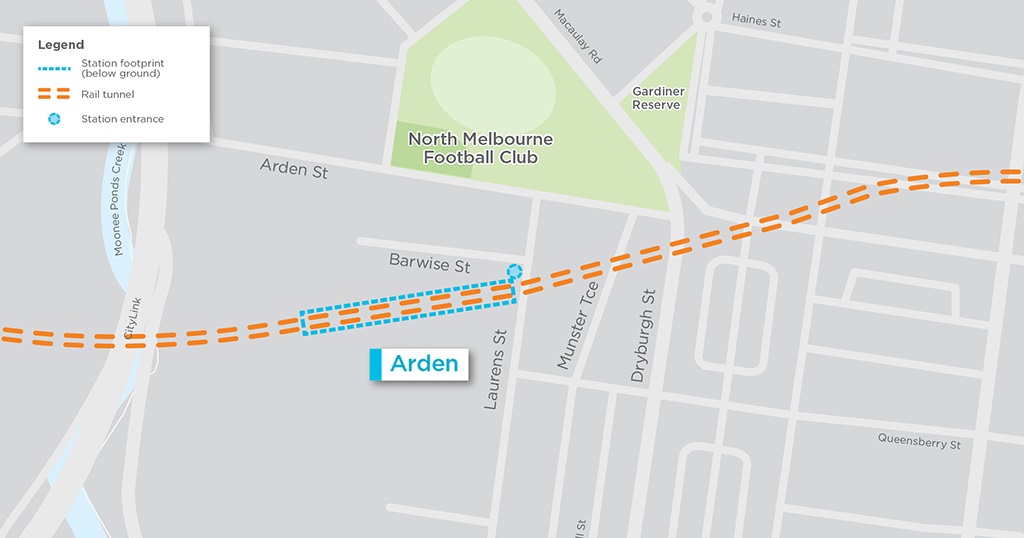
There will also be a separated, raised bike path on the west side of Laurens Street and the planned Station Lane will be widened to make more space for vehicles.
While the previous Development Plan had the ground level raising locally around the skylight, the design for ground level is now relatively flat, allowing for the skylights to appear raised.
The government said that work is well advanced on the station, with platform construction beginning in March, continuing alongside the installation of the over-track exhaust system and tunnel floor slab.
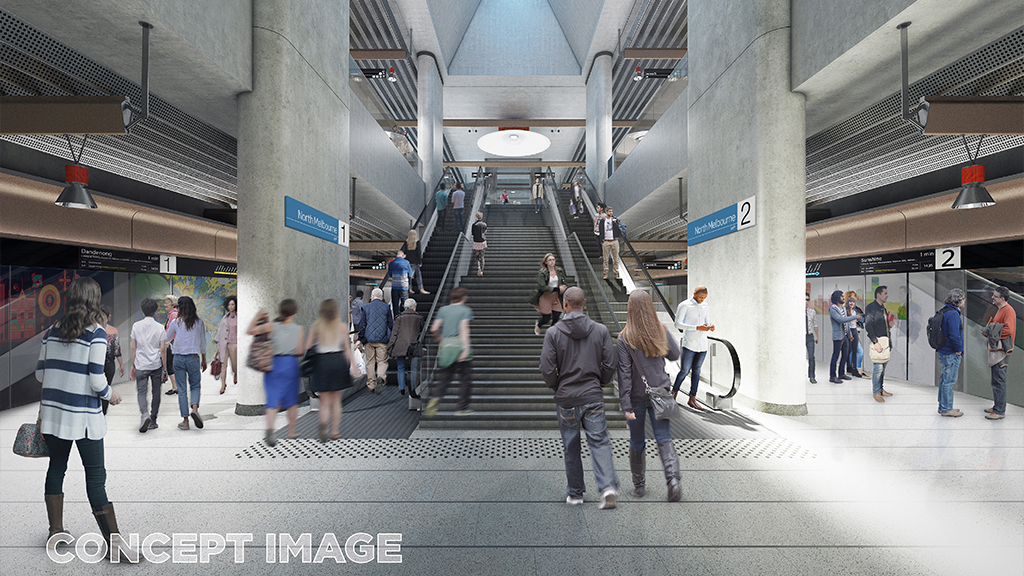
“Arden Station was where we launched our first tunnel boring machine almost two years ago, and with tunnelling now complete we’ll see the station take shape in coming months and years,” said transport minister Jacinta Allan.
The Metro Tunnel will connect the Sunbury Line to the Cranbourne and Pakenham lines with five new underground stations and will provide a future direct link to Melbourne Airport Rail.
The updated designs are on exhibition until 27 August.
written by : ArchitectureAU Editorial
10 Aug 2021
published in : architectureau.com
Last Posts
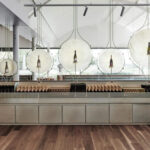
Chandon Australia by Foolscap Studio

LINA Architecture Platform Program
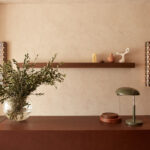
IN BED Armadale Store by Flack Studio
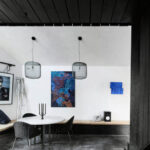
Host House by Splinter Society Architecture
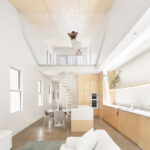
Thomson House by C.Kairouz Architects
